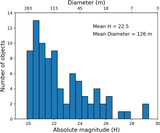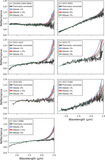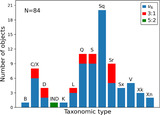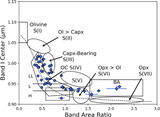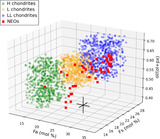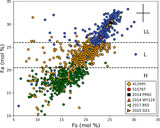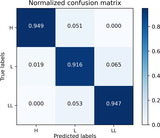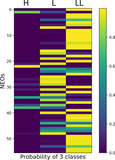Image Details
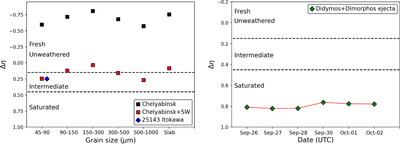
Caption: Figure 13.
Left: space-weathering parameter Δη vs. grain size for the LL-chondrite Chelyabinsk. Black squares represent the Δη values calculated for different grain sizes of Chelyabinsk obtained by Bowen et al. (2023). Red squares represent the Δη values of Chelyabinsk plus space weathering (SW) after being offset to match the Δη calculated for asteroid Itokawa (blue diamond) from the spectrum obtained by Binzel et al. (2001). Right: space-weathering parameter Δη vs. date for the Didymos system. Δη has been calculated from the PC values reported by Polishook et al. (2023). The location in the x-axis of the Didymos system corresponds to the observation dates carried out before (September 26) and after (September 27–October 2) the impact of the DART mission. For both figures, regions corresponding to the different regimes of space weathering (fresh, intermediate, and saturated) from Binzel et al. (2019) are indicated.
Copyright and Terms & Conditions
© 2024. The Author(s). Published by the American Astronomical Society.


